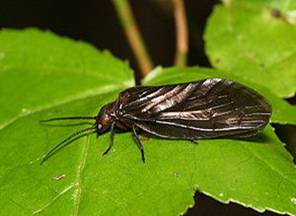The Adams and the Alder


The Adams, created by Leonard Halladay in 1922, represents a multitude of grayish-brownish insects and seems to have no geographical limit in its usefulness around the globe. Tied in sizes 10 through 22, the Adams is fished during hatches of all major insect orders. It has been said that the Adams was originally designed to represent a mayfly, some say a caddis fly and still others say a stonefly. I present to you today a different theory - I suggest to you that the Adams was designed to imitate an alderfly.
The alderfly has always been important to the trout fisherman. Writings of the hatches and fly patterns date back to the 1800’s in Great Britain. Alderfly distribution is global but they are most prevalent in areas with a temperate climate. In North America alone there are 23 species of alderflies, most densely distributed in the eastern and central states. On certain rivers around the country the hatches of alderflies are so great that they are listed on the hatch charts for the area and rival many of the great insect hatches that we read about in the fly fishing magazines.
The alderfly is quite commonly found on ponds and sluggish streams with silted, muddy bottoms containing a lot of detritus. Adults are found in both May and June. The adult insects live for only a few days during which time they do not feed. Most species breed at night. Females lay their eggs on emergent vegetation or on plants that overhang the water so that when hatching occurs the larva can fall into the water where they live and develop.
 The alderflies present a large brownish to blackish silhouette. Their parchment-like wings are grayish-brown. Their length is about 20 millimeters and the last segment of their body is tipped with a long spike-like gill. They are sluggish, weak fliers and remain close to the surface of the water. When airborne, the alderfly bears an uncanny resemblance to the Adams fly. Most trout fishermen have seen alderflies, but not being familiar with them; just pass them off as a caddis fly.
The alderflies present a large brownish to blackish silhouette. Their parchment-like wings are grayish-brown. Their length is about 20 millimeters and the last segment of their body is tipped with a long spike-like gill. They are sluggish, weak fliers and remain close to the surface of the water. When airborne, the alderfly bears an uncanny resemblance to the Adams fly. Most trout fishermen have seen alderflies, but not being familiar with them; just pass them off as a caddis fly.
Let’s take a look at the original story. Reportedly, Mr. Charles Adams brought several insect specimens to Leonard Halladay to have him tie up an imitation. Mr. Adams was no stranger to fly fishing. By all accounts he was a very accomplished and knowledgeable fisherman. It would make sense that he was aware of the local hatches and had at least some knowledge of insect names. Why would he bring the insects to Halladay when all he had to do was to say, “tie me up something that resembles a Little Black Caddis, or a Brown Drake.” Most probably the insects he brought to Halladay were strange to him. I would suggest to you that Mr. Charles Adams stumbled onto a hatch of alderflies and not recognizing them, brought some of these flies to Leonard Halladay and that the pattern he dubbed the ‘Adams’ was in fact, an imitation of the alderfly.
Alderfly hatches do occur with some regularity here on Michigan streams. They do not appear on the hatch charts and are not the topic of conversation at the fly shops but are noteworthy enough that when I fish in the evenings and at night I am attuned to their presence. A slight breeze will blow these cumbersome insects into the water. They are bulky insects and usually sink rapidly.
I have encountered hatches on the Pine, Au Sable and Boardman Rivers. When I do, I switch to a standard Adams fly pattern which has not been treated with floatant. Fishing the Adams ‘wet’ will usually bring rising trout to your fly. On several occasions I have actually witnessed several trout attack simultaneously a single fly.

Materials:
- Hook: Dry Fly Size: 12-14
- Thread: Gray
- Tail: Golden Pheasant Tippet, two strands
- Wings: Grizzly Hackle Tips, tied semi-spent, advance forward
- Body: Gray wool yarn
- Hackle: Grizzly & Brown, mixed
Above image and Materials from Tom's website (Adams (original)) at http://www.michigandryflies.net/fly-patterns
See you on the water…..
Tom Deschaine
Copyright2010©Deschaine
~www.michigandryflies.net~
For more great info, check out:
Beginning Fly Tying | Intermediate Fly Tying | Advanced Fly Tying.
